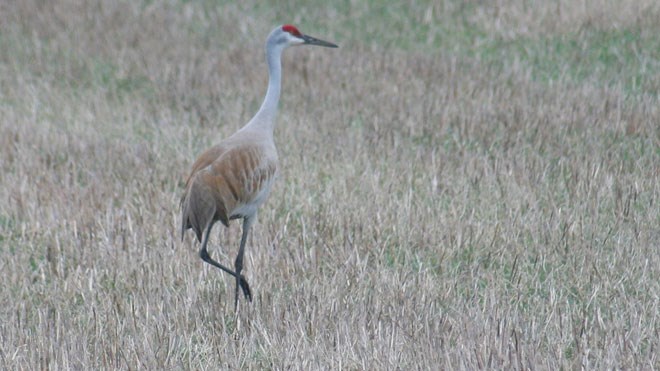Anyone who has been keeping notes on nature’s spring progressions over the years may come to the same conclusion as others that spring has come slow this year.
This can be measured by the frequency of dandelion flowers that grow close to houses, the rising of crocus, rhubarb stirrings, flight of the infant moth and the first sound of spring peepers, our small local frogs.
Local clubs often hold field trips as a means of group activity in the anticipation of finding spring arrivals when in fact they just have not yet arrived. In another week, things should change with the advent of warmer weather, opening buds and the associated insect load that translates into food for the insectivores.
This Sunday last is a case in point. The local bird club went out on their annual road trip to Massey, which includes coverage of many miles over hill and dale, visits to local farmer’s fields for migrants, and a final stop at Spanish Marina with its panoramic view of the North Channel and the promised sightings of such majestic birds as tundra swans, bald eagles and sometimes even white pelicans.
The day turned out to be great for birding, even though it was overcast with the promise of snow.
There was little in the way of cold winds, rain or snow and the waters were calm for easy viewing of those birds that normally might ride the troughs and peaks of wave activity.
One of our guests was a non-birder and was introduced to the hobby and science of avian behaviour with a nine hour road trip with 15 birders and lots of zooming in and on feathered things. As much of a challenge for anyone, her bird of the day became the turkey vulture.
We started the day very early and managed to have a breakfast at the newly renovated Back Home Bistro restaurant in Massey. Opening early, the food was great, service divine and we were out of there in relatively short order. Carpooling becomes an essential behaviour on these types of field trips as there are many cars and trucks that could take a rest by doing this.
Our reluctant leader by unplanned design had some six cars and trucks behind us when we finally started. The author only gave one bad and one unclear instruction during the whole nine hours.
Although most participants keep a daily tally and some a photographic history, there is usually an “official” person that keeps the official tally and just over 50 species were seen during the course of the day over the two districts we were in.
At Spanish marina, we were to mount the many steps and get an exquisite view of the countryside with absolutely no cold winds, partial sun and calm waters to look at. Spotting scopes give magnifications up to 30 times generally and these helped the group view distant birds. There were 11 large white tundra swans, and there were at least four bald eagles seen with an adult bird near the traditional nest site.
The lagoons near the old Residential School site harboured a good mix of ducks with lesser scaup, ring-necked duck, gadwall, American widgeon, green-winged teal, blue winged teal, northern shoveler, American black duck and mallard all seen in their perspective areas. Lesser scaup outnumbered everything else.
A common raven nest with young was embedded in the rock face not twenty feet from where we walked. By then it was nearing the end of the day and plans were being made to return by the River Road to Massey.
Everyone has their own highlights of the day but these were some of the interesting species seen during our Sudbury travels: rough-legged hawk, broad-winged hawk, merlin, winter wren (with its eerie call), brown creeper, wood duck, turkey vulture, turkey vulture (there were more than one), rusty blackbird, two chipping sparrows at a feeder, greater yellowlegs with an unresolved lesser or intermediate about, lots of Canada geese, not too many Sandhill cranes, no warblers, no savannah sparrows, evening grosbeaks, a funny singing male purple finch with courtesan, an Eastern meadowlark at a distant fence post and finally two white-throated sparrows. There were a few more species, but this is the summary for now. It was pointed out that we were about five days earlier than usual for this event and this may have explained the types of birds and numbers that we experienced.
There are several clubs that include environmental or outdoor activities in the reading area and most have planned events and trips. Clubs include the Mindemoya Naturalists (Manitoulin Island), the Sudbury Naturalists, the Sudbury Ornithological Society, the Sudbury Horticultural Club, the Elliot Lake Naturalists (Elliot Lake), and Rainbow Routes Association Hike Club.
Chris Blomme is an executive member of the Sudbury Ornithological Society and works with animals at Laurentian University. Have a question for Chris? Send it to [email protected].
